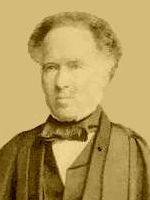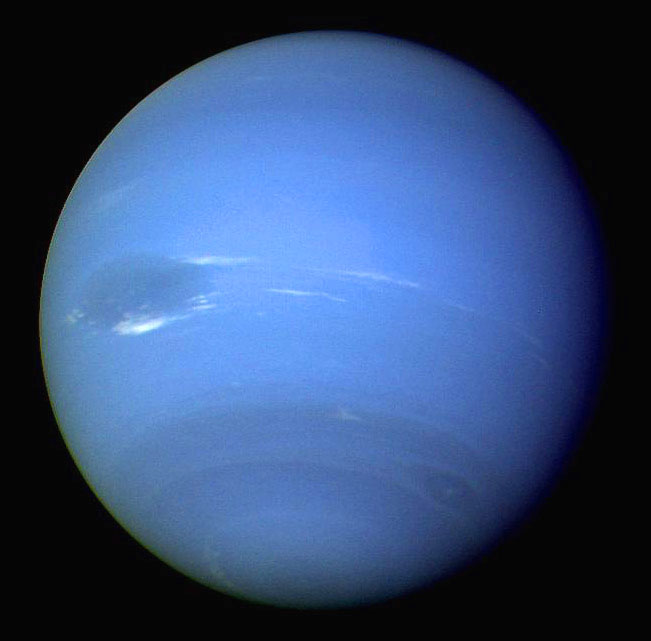
James Challis (1803-1882)
On December 12, 1803, English clergyman, physicist and astronomer James Challis was born. Challis investigated a wide range of physical phenomena though made few lasting contributions outside astronomy. He is best remembered for his missed opportunity to discover the planet Neptune in 1846.
Early Years
James Challis was born in Braintree, Essex, UK, where his father, John Challis, was a stonemason. After attending Braintree School, the Revd Daniel Copsey’s school, Braintree, and Mill Hill School, Mill Hill, Middlesex, Challis, he matriculated in October 1821 at Trinity College, Cambridge, where he graduated in 1825 as Senior Wrangler and first Smith’s prizeman. He was elected a fellow of Trinity in 1826 and was ordained in 1830. He held the benefice of Papworth Everard, Cambridgeshire from the college until 1852. In 1831 Challis married Sarah Copsey, née Chandler, a widow, and consequently resigned his Trinity fellowship.
Academic Career
In 1836, he became director of the Cambridge Observatory and Plumian Professor, holding the latter post until his death. He lectured in all areas of physics. As examiner for the Smith’s prize, he appraised the early work of G. G. Stokes, Arthur Cayley, John Couch Adams,[4] William Thomson (later Lord Kelvin), Peter Guthrie Tait and James Clerk Maxwell. For over a decade, in correspondence and publications, Challis repeatedly disagreed with Stokes’s conclusions from his research. Challis was referee for Thomson and for Stokes in their respective applications for chairs at the University of Glasgow, and for Maxwell at Aberdeen. He and Thomson together set and examined the Adams prize topic on Saturn’s rings, won by Maxwell in 1857.
Astronomer Royal
Challis succeeded George Biddell Airy,[8] who had been nominated Astronomer Royal in 1835, at the observatory, where he and his wife lived at the observatory as genial hosts for 25 years, and gradually improved the instrumentation and accuracy of observations. He made some early observations of the fracture of comet 3D/Biela into two pieces on 15 January 1846 and re-observed both fragments in 1852. He published over 60 scientific papers recording other observations of comets and asteroids. He invented the meteoroscope (1848) and the transit-reducer (1849). Challis eventually resigned the observatory post because of the chronic stress that his inability to keep up with processing new astronomical observations was causing him. His predecessor Airy had taken a more relaxed attitude. He was succeeded by John Couch Adams though he maintained his professorship until his death [4].

Neptune in 1989 as imaged by the Voyager 2 probe
Beyond Uranus
In 1846, Airy finally persuaded a skeptical Challis to join in the search for an eighth planet in the solar system. Adams had predicted the location of such a planet as early as 1844, based on irregularities in the orbit of Uranus. Adams failed to promote his prediction successfully and there was little enthusiasm for a systematic search of the heavens until Airy’s intervention. Challis finally began his, somewhat reluctant, search in July 1846, unaware that Frenchman Urbain Le Verrier had independently made an identical prediction[5]. German astronomer Johann Gottfried Galle, assisted by Heinrich Louis d’Arrest, finally confirmed Le Verrier’s prediction on 23 September 1846[6]. The planet finally was named “Neptune“. It soon became apparent from Challis’s notebooks that he had observed Neptune twice, a month earlier, failing to make the identification through lack of diligence and a current star chart. Challis was full of remorse but blamed his neglect on the pressing business of catching up on the backlog of astronomical observations from the observatory.

Graph showing the various predictions of the place of Neptune on 1846/09/23, its day of discovery, according to various hypotheses circulated privately by John Couch Adams (blue circles), and published by Urbain Le Verrier (pink square).
Further Achievements
Challis also worked in hydrodynamics and in optics where he supported the wave theory of light and advanced the theory of a luminiferous ether as a medium for its propagation. However, he rejected the idea that the ether was an elastic solid, insisting that it was a fluid, bringing him into conflict with Airy and Stokes. Driven by Sir Isaac Newton’s somewhat obscure assertion of “a certain most subtle spirit which pervades and lies hid in all gross bodies”, Challis was driven to attempt to derive all physical phenomena from a model of inert spherical atoms embedded in an elastic fluid ether, an enterprise described as an attempt at a “Victorian unified field theory”. His work included a mechanical explanation of gravitation.
James Challis published 225 papers in mathematics, physics and astronomy. He was re-elected fellow of Trinity in 1870. He died in Cambridge on December 3, 1882, aged 78.
Jason Hissong, Neptune was discovered by…Mathematics!, [9]
References and Further Reading:
- [1] Clerke, A. M. (2006) “Challis, James (1803–1882)“, rev. David B. Wilson, Oxford Dictionary of National Biography, Oxford University Press, online edn, Oct 2006
- [2] J. W. L. G. (1882–83) “James Challis” Monthly Notices of the Royal Astronomical Society, 43: 160–79
- [3] James Challis, British astronomer, at Britannica online
- [4] John Couch Adams and the Discovery of Planet Neptune, SciHi Blog, January 21, 2017
- [5] Urbain Le Verrier and the hypothetical Planet Vulcan, SciHi Blog, January 2, 2014
- [6] Johann Gottfried Galle and Planet Neptune, SciHi Blog, June 9, 2014
- [7] Hubbell, J. G. & Smith, R. W. – Neptune in America –Negotiating a Discovery – History of Astronomy Journal V.23, NO. 4/NOV, P.261, 1992
- [8] The Astronomical Achievements of Sir George Biddell Airy, SciHi Blog
- [9] Jason Hissong, Neptune was discovered by…Mathematics!, CAS Lecture from January 11, 2020, Columbus Astronomical Society
- [10] James Challis at Wikidata
- [11] Timeline of Discoveries in the Solar System, via Wikidata





